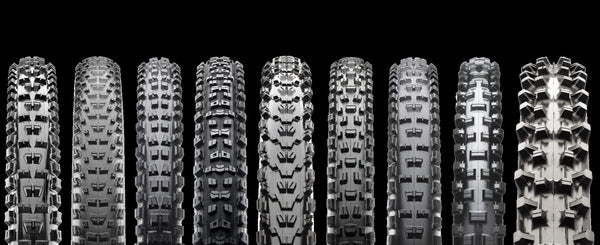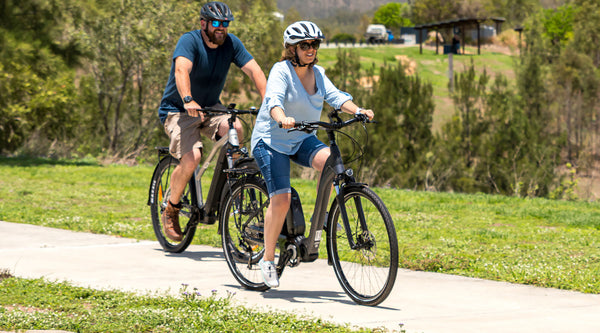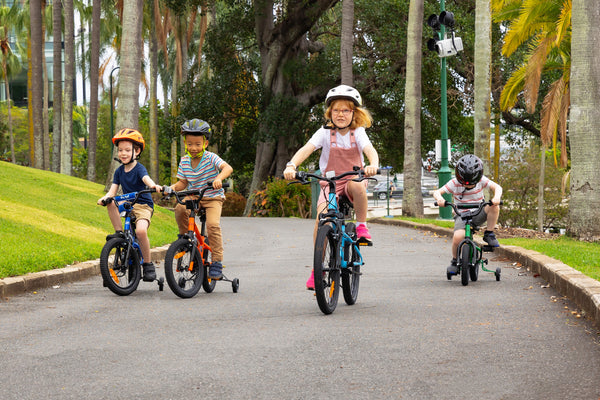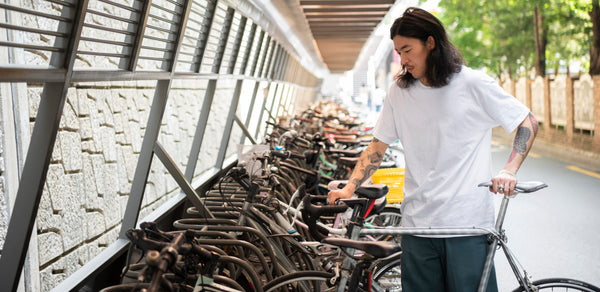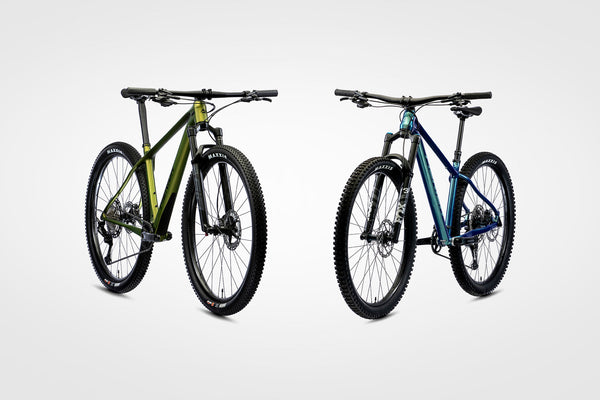A complete guide to MTB Tyres
Among the essential components of a mountain bike, tyres play a crucial role in providing traction, control, and comfort. In this comprehensive guide, we will explore the different types of mountain bike tyres, key factors to consider when choosing them, the importance of tire pressure, installation and maintenance tips, the differences between tubeless and traditional tubes, tire tread selection based on terrain types, and troubleshooting common tire issues.
The Different Types of Mountain Bike Tyres:
Mountain bike tyres come in various designs and sizes to cater to different riding styles and terrains. Some common types include:
- Cross-Country (XC) Tyres: Lightweight and fast-rolling tyres designed for speed and efficiency on smoother trails.
- Trail Tyres: Versatile tyres that strike a balance between traction and rolling resistance, suitable for a variety of terrains.
- Enduro/All-Mountain Tyres: Durable and aggressive tyres built to handle challenging downhill sections while maintaining traction.
- Downhill Tyres: Wide and heavy-duty tyres with aggressive tread patterns to provide maximum grip and stability on rough, steep descents.
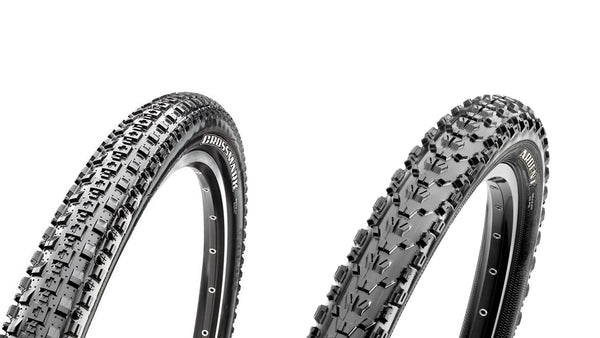
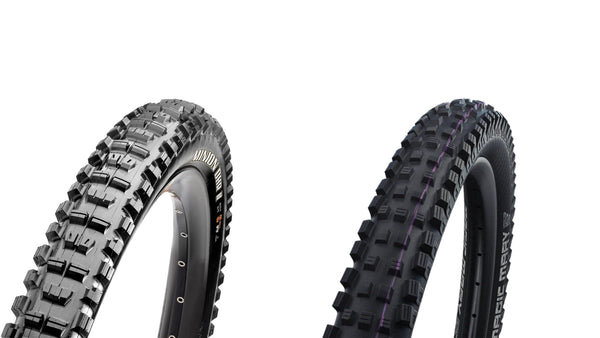
Key Factors to Consider When Choosing a Mountain Bike Tire:
When selecting mountain bike tyres, consider the following factors:
- Terrain: Identify the primary terrain you'll be riding on (hardpack, loose gravel, mud, rocks) and choose a tire with the appropriate tread pattern and width.
- Size: Ensure the tire size is compatible with your bike's rim diameter and frame clearance.
- Traction: Look for tyres with reliable grip and cornering capabilities to enhance control and confidence.
- Rolling Resistance: Balancing grip with rolling resistance is crucial for optimizing speed and efficiency.
- Durability: Consider the tire's sidewall construction and compound to withstand abrasion and punctures.
The Importance of Tire Pressure and How to Set Up for Different Conditions:
Tyre pressure might seem like a bit of an afterthought, but giving it the squish test just won’t cut it if you’re looking for maximum performance, comfort and longevity out of your tyres. Factors such as rider weight, terrain, and riding style will all influence your tire pressure.
To set up your tyres:
- Start with manufacturer-recommended pressure guidelines.
- Experiment with slightly lower pressures to improve traction in technical terrain.
- Higher pressures are suitable for smoother surfaces and minimizing rolling resistance.
- Consider investing in a quality tire pressure gauge or pump with gauge so you know exactly how much pressure you're running to dial it in.
- Check your tire pressure before every ride.
Tyre pressure guide:
We recommend using this table as a guide only, you may find running your pressures higher or lower than shown to be more to your preference. It’s always best to trial different pressures on different terrain to dial in what gives you the best performance.
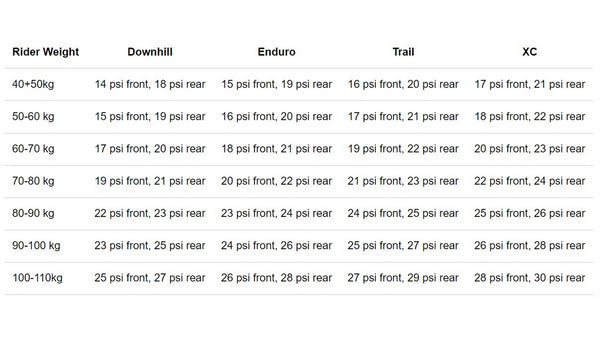
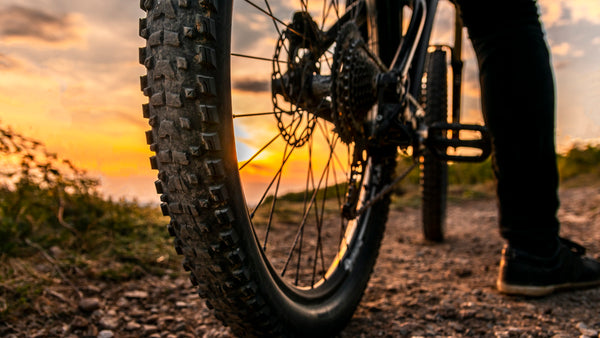
Tips for Choosing Tire Treads Based on Different Terrain Types:
Matching tire treads to specific terrain can greatly enhance your riding experience.
- Hardpack: Opt for tyres with closely spaced and smaller knobs for increased speed and grip on compact surfaces.
- Loose or Sandy: Look for tyres with aggressive tread patterns and larger knobs for enhanced traction and self-cleaning ability.
- Wet and Muddy: Choose tyres with widely spaced and tall knobs to improve mud-shedding and maintain grip.
- Rocky or Technical: Select tyres with reinforced sidewalls and a combination of larger and smaller knobs for stability and traction.
How to Properly Install and Maintain MTB Tyres:
- Clean the rims and inspect for damage or debris before installing new tyres.
- Ensure the tire bead is fully seated on the rim, avoiding pinch flats.
- Use tire levers with caution to avoid damaging the tire or tube.
- Regularly inspect the tyres for wear, sidewall damage, or embedded objects.
- Maintain proper tread depth to sustain optimal traction.
The Differences Between Tubeless and Traditional Tubes:
Tubeless:
Tubeless tires offer several advantages over traditional tubed tires. One key benefit is the ability to run lower tire pressures without the risk of pinch flats. This improves traction and comfort, especially on rough terrain. Tubeless tires also tend to have better rolling resistance and can be lighter than their tubed counterparts.
To set up a tubeless system, you need tubeless-ready rims and tires. These rims have a specific shape and airtight sealing system, often involving a tubeless valve stem. Tubeless-ready tires have a reinforced bead and sidewalls, which help them form a tight seal with the rim.
To make the system airtight, sealant is added to the tire. The sealant helps seal punctures on the fly by sealing the hole with latex or other compounds. This allows for self-sealing of small punctures without the need to stop and fix a flat tire.
Traditional Tubes:
Commonly known as inner tubes, these are inflatable tubes made of rubber or similar materials. They provide the air-holding chamber within the tire, allowing it to maintain its shape and hold air pressure.
Installing tubes is simpler and requires less specialized equipment compared to setting up a tubeless system. You only need to insert the tube into the tire, mount the tire on the rim, and inflate it. This can be advantageous if you're not familiar with tubeless setups or if you prefer a more straightforward installation process.
Tubes can be used with any tire and rim combination as long as they are the correct size. This makes them a versatile option if you have a wide range of bikes with different types of tires or if you frequently switch tires for different terrains or riding conditions.
How to Troubleshoot Common Tire Issues:
Understanding how to address common tire issues ensures a smoother ride:
- Punctures: Carry a tire repair kit or spare tubes and know how to patch or replace a tube when encountering punctures.
- Burping (Tubeless): Properly seal tubeless tyres with fresh sealant, ensure the bead is securely seated on the rim and make sure to check your pressures before riding.
- Sidewall Damage: Assess the severity of sidewall damage; minor cuts can be sealed with tire sealant (Tubeless), while severe damage may require tire replacement.
- Excessive Wear: Regularly inspect tire tread and replace worn-out tyres to maintain optimal performance. If you’ve ground down the knobs doing skids you’ll have less traction when you need it.
Selecting the right mountain bike tyres is essential for maximizing performance, control, and enjoyment on the trails. Consider factors such as terrain, tire type, tread pattern, and tire pressure to make an informed decision. Proper installation, maintenance, and troubleshooting skills will keep your tyres in top condition. Remember, the right tyres can transform your mountain biking experience, allowing you to conquer any terrain with confidence. Happy trails!

